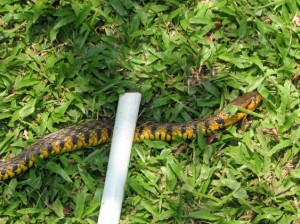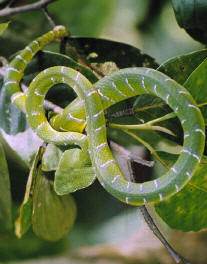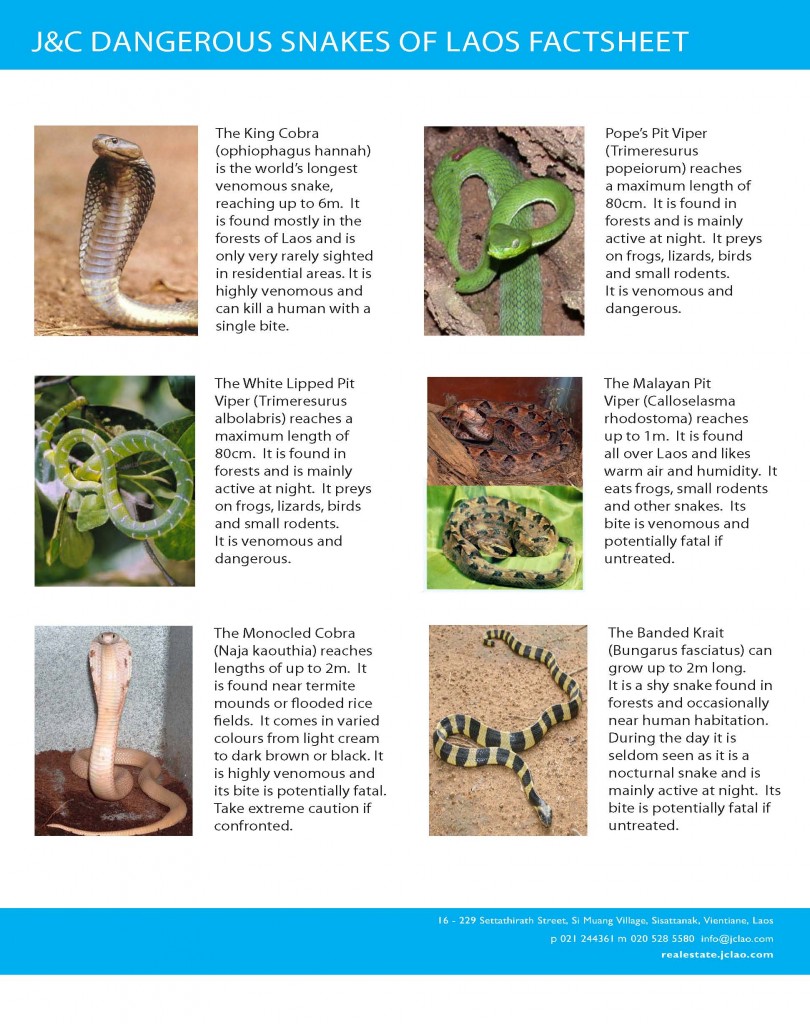Dog Vs. Snake
As we all know, Laos is home to many rare and unique animals including tigers, black bears, elephants, deer, dolphins, gibbons, giant catfish and crocodiles. Luckily most of these won’t turn up in your backyard.
What I personally wasn’t aware of, however, is that Laos is also home to some of the most dangerous snakes in the world. Coming originally from a “cold” country, I’m still trying to get used to the idea of having to share my garden with venomous cobras and vipers.
My two dogs have discovered three snakes so far. The most recent incident was last week when I heard a lot of noise coming from the garden, with the plants in one corner shaking like wild. Before realizing what was going on, Emi, my monstrous Rottweiler appeared with something black and yellow hanging from her mouth…. another snake, and quite beautiful in color. I tried to find information about this snake on the internet without success, so I’m not sure how dangerous this last encounter was. Emi, however, got a special treat that day!

Snake bites can be deadly if not treated quickly. Children are at higher risk of death or serious complications due to snake bites because of their smaller body size. The right antivenin can save a person’s life and if properly treated, many snake bites will not have serious effects. Getting to the Australian Clinic (located at the Australian Embassy) as quickly as possible is very important, as per my knowledge they are the only ones who have all the right antivenins here in Vientiane.
So what to do in case you get bitten by a snake ?
1. Keep the person calm, reassuring them that bites can be effectively treated in an emergency room. Restrict movement and keep the affected area below heart level to reduce the flow of venom.
2. If you have a pump suction device (such as that made by Sawyer), follow the manufacturer’s directions.
3. Remove any rings or constricting items because the affected area may swell. Create a loose splint to help restrict movement of the area.
4. If the area of the bite begins to swell and change color, the snake was probably poisonous.
5. Monitor the person’s vital signs — temperature, pulse, rate of breathing, and blood pressure — if possible. If there are signs of shock (such as paleness), lay the person flat, raise the feet about a foot, and cover the person with a blanket.
6. Get medical help right away.
7. Bring in the dead snake only if this can be done safely. Do not waste time hunting for the snake, and do not risk another bite if it is not easy to kill the snake. Be careful of the head when transporting it — a snake can actually bite for up to an hour after it’s dead (from a reflex).
- Do NOT allow the person to become over-exerted. If necessary, carry the person to safety.
- Do NOT apply a tourniquet.
- Do NOT apply cold compresses to a snake bite.
- Do NOT cut into a snake bite with a knife or razor.
- Do NOT try to suck out the venom by mouth.
- Do NOT give the person stimulants or pain medications unless a doctor tells you to do so.
- Do NOT give the person anything by mouth.
- Do NOT raise the site of the bite above the level of the person’s heart.





